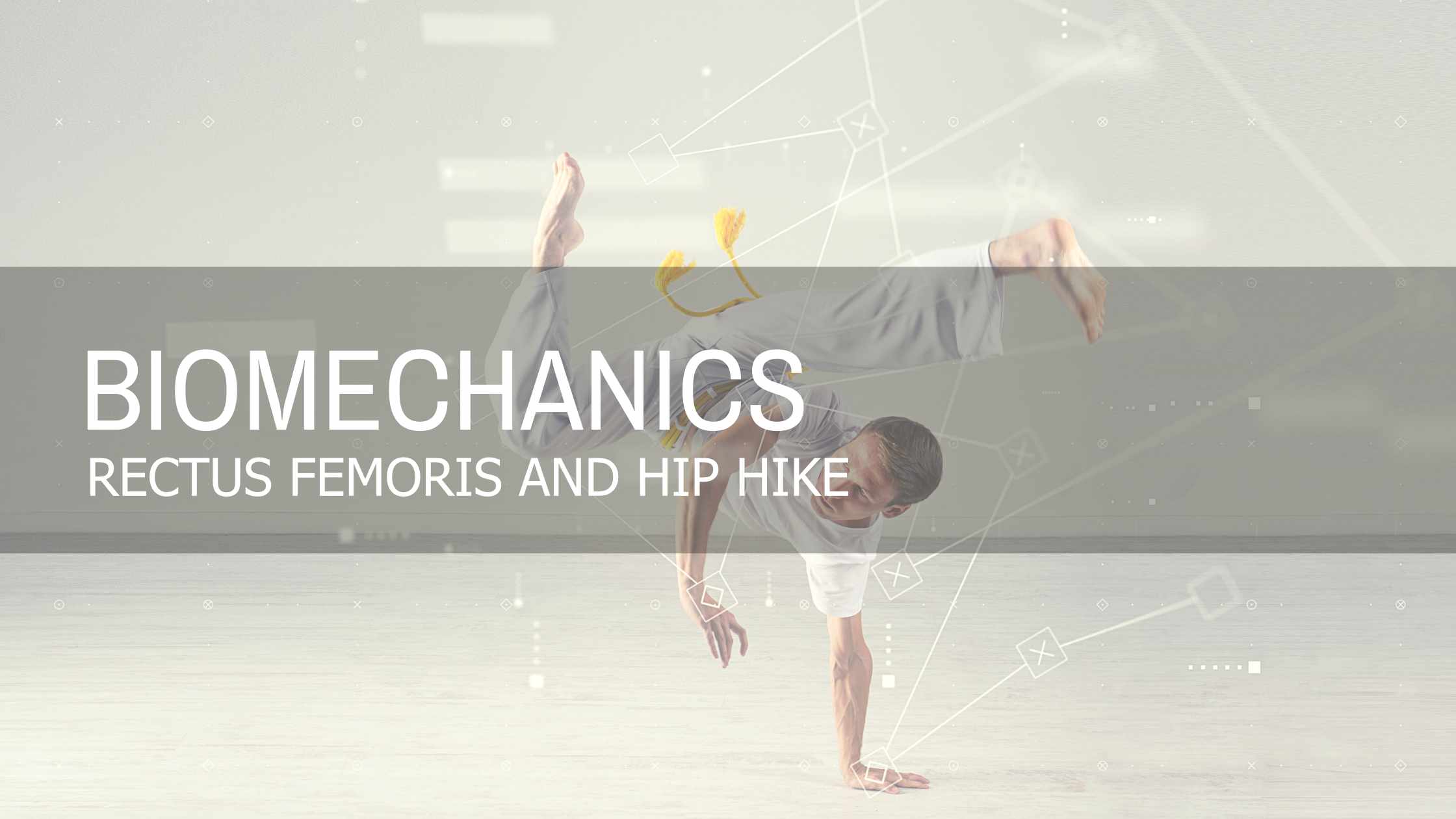
Sep 13 , 2021
0 Comments
Designed to Move | Rectus Femoris and Hip Hike
The body is constantly adjusting to maintain balance. As external forces are applied from the environment (like gravity or momentum) our body, in its attempt to maintain equilibrium, will contract and lengthen groups of muscles to stabilize itself. It must create force to oppose force.
Motor Engrams
Often our daily activities subject our bodies to forces which are one sided. Most of us are right handed so we regularly complete movements on that side of the body. We move in patterns which we complete almost instinctively. These patterns are called motor engrams. These are sets of instructions stored within our brain that tells the body how to perform a specific movement.
Throwing a ball may seem like child's play to the average person but that’s only because they have stored that particular movement skill as a motor engram in their brain. The brain can quickly access the set of instructions and tell the body to efficiently complete the motion. They forget the thousands of throws they completed to make the movement so effortless.
The Problem
Because of the repetitive nature of human movement and due to having movement bias on one side our bodies we can begin to develop movement compensation patterns. This is where we favor the use of certain muscles over others. When this happens our brain will begin to program these inefficient muscle recruitment patterns as it’s standard fallback. Faulty motor engrams are developed. Overtime this altered neuromuscular strategy can place certain muscles and structural elements like joints and connective tissues under more strain than they can handle. This is how injury cycles can begin to emerge.
Asymmetries
Muscular asymmetries develop which create subtle shifts in how our bodies approach a movement. This could be from something as simple as never fully rehabbing a sprained ankle. The body will take the path of least resistance and naturally adjust its typical gait cycle to place less load on the affected limb. This avoidance strategy is how it compensates for when its natural position is no longer an available option. Overtime the overuse of certain muscles will cement the immobility into the nervous system and create postural distortions. This feed forward mechanism is how something as non-threatening as a sprained ankle could eventually lead to much bigger problems in other areas of the body down the road.
Hip Hike (Pelvic Obliquity)
A common postural distortion can be seen in the hips where one side of the pelvis is hiked up giving the impression that one leg is longer than the other. While there are indeed cases of structural leg length discrepancy where one leg is actually longer than the other, typically the distortion has to do with overactive postural muscles around the hips which alter the placement of the pelvis creating an illusion of a longer leg. Usually this happens on the dominant side of the body, but not always.
The overused muscles (hip flexors and rectus femoris) pull the pelvis more anteriorly than they should. This is a position where the pelvis is tilted forward from the spine lengthening the butt muscles. While a slight tilt is typical and isn’t really a problem, when it’s excessive it can cause compressive forces on the spine altering its alignment. This can lead to a whole host of different problems.
So because the thigh bones (femurs) attach to the two sides of the pelvis, if one side becomes more anteriorly tilted than the other (typically because of our one sided dominance or movement bias), it will shift the leg downward creating an obliquity in the pelvis (meaning it isn’t parallel). This alters the way our spine rests in the two halves of our pelvis, twisting and compressing it. These compressive forces flow all the way up the spine impacting not only the trunk but also how the head rests on the top vertebrae the atlas. The consequences of this can be significant. Aside from the possibility of herniated discs, scoliosis and nerve impingement the postural distortion can impact the movement quality of everything else we do.
Yes, There is a Solution!
- Increase the mobility of the muscles that contribute to anterior tilt (such as the rectus femoris).
- Recognize which muscles help to balance the pelvis and strengthen them (such as the medial hamstrings (semimembranosus, semitendinosus) and gluteus medius.
- Condition your nervous system with functional movement patterns that coordinate the appropriate muscular firing patterns. (You’ll get an example in the video below so read on!)
- Reduce movements which emphasize knee extension.
How to Assess?
Want to find out if you have an asymmetrical weight shift? Here is a quick movement assessment you can complete to determine if you exhibit the signs:
Stand with your hands on your hips with your feet pointed straight ahead. Lift one leg up by bending at the knee drawing the foot behind you. Squat down to a comfortable position then come back to your beginning position. Repeat several times then switch legs and repeat
- Did the opposite side of the working leg hip drop?
- Did your torso rotate inward?
- Did your knee drop or rotate inwards?
If you answered yes to any of these questions, you tested positive for this common posture problem and you’ll want to pay attention to what comes next and watch the accompanying video on how to correct it.
Simple Corrective Methods
Correcting Overactive Muscles
Because we move in patterns, our bodies favor the use of certain muscle groups over others. Since many of us have anteriorly tilted hips (possibly asymmetrically - one sided), this can place the rectus femoris into an overactive position. You’ll want to lengthen them via self-myofascial release, and then follow the myofascial release with neuromuscular stretching.
Below are the muscles you’ll want to focus on for anterior tilt (asymmetrical hip hike) this week:
- Rectus Femoris Self-Myofascial Release for 60 to 90 seconds on each side
- Stretch or lengthen each for 60 to 90 seconds on each side
Correcting Underactive Muscles
As mentioned above, pain in the body is commonly caused when how we move forces certain muscles to work overtime, while other muscles become lazy and don’t want to function. You’ll need to wake up these lazy muscles through isolated strength movements.
The medial hamstrings and gluteus medius are the muscles we’ll want to engage this week:
- Medial Hamstrings | Lying prone body weight knee flexion with foot internally rotated
- Gluteus Medius | Standing band hip extension with abduction - 2 sets on each muscle group 10-15 reps using a slow opening of the muscle, isolated hold at the bottom of the movement, followed by a controlled shortening of the muscle.
Now that you know which muscles are typically underactive and overactive, let’s put it all together for you. Watch the video for a step-by-step breakdown on how to target each of these areas. Before you get started, make sure you have a foam core ball and a medium weight exercise band available.
Start off by applying the techniques three times a week and build from there. Every so often, reassess your posture and see how far you’ve progressed. Soon, you’ll start to see noticeable changes in your body position and mobility!




